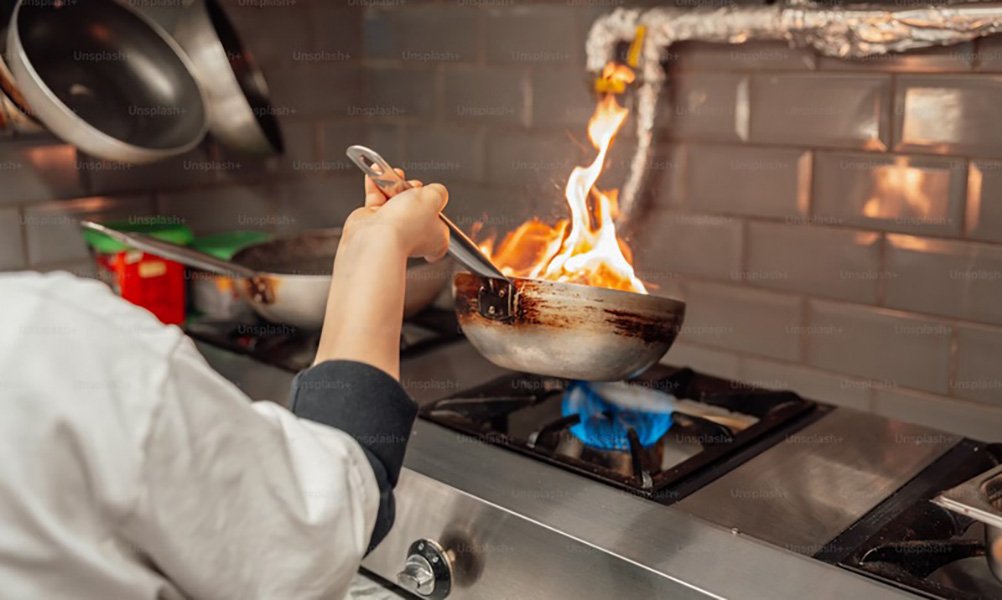Cooking with stainless steel pans is a favorite choice among professional chefs and home cooks alike. However, one common challenge is preventing food from sticking to the pan. Unlike non-stick cookware, stainless steel requires proper technique to achieve optimal results. In this article, we will explore the best tips for cooking with stainless steel pans without sticking.
1. Preheat the Pan Properly
One of the most important steps in using stainless steel cookware is preheating the pan correctly. Stainless steel needs to reach the right temperature before adding ingredients to prevent food from sticking. A simple way to test if the pan is ready is by performing the water droplet test:
•Heat the pan on medium heat for a couple of minutes.
•Add a few drops of water to the pan.
•If the water droplets form small beads and glide across the surface, the pan is at the perfect temperature.
•If the water evaporates instantly, the pan is too hot and should be cooled slightly before use.
Preheating ensures that food sears properly instead of sticking to the pan.
2. Use the Right Amount of Oil or Fat
Stainless steel pans require the right amount of oil or fat to create a natural non-stick surface. Follow these steps for best results:
•Once the pan is preheated, add a small amount of high-smoke-point oil such as avocado oil, grapeseed oil, or clarified butter (ghee).
•Swirl the oil around to coat the bottom of the pan evenly.
•Allow the oil to heat up before adding food.
This step helps create a barrier between the food and the pan, preventing sticking.
3. Let the Food Develop a Natural Release
One of the biggest mistakes when cooking with stainless steel is trying to move the food too soon. Stainless steel cookware works best when you allow the food to develop a natural sear before flipping or stirring. Here’s how:
•Place the food gently in the pan and let it cook undisturbed for a minute or two.
•If you try to flip the food too early and it sticks, wait a little longer. Once it forms a crust, it will naturally release from the pan.
•Use a stainless steel or wooden spatula to test if the food is ready to turn.
This technique is especially useful for proteins like chicken, fish, and steak.
4. Avoid Overcrowding the Pan
When too much food is placed in the pan, it reduces the temperature of the cooking surface, leading to uneven cooking and sticking. To prevent this:
•Cook in batches if necessary.
•Leave some space between ingredients for better heat circulation.
•If steaming occurs instead of searing, remove some of the food and cook in smaller portions.
Proper spacing ensures better browning and prevents sticking.
5. Use the Right Cooking Utensils
The utensils you use can impact how food interacts with the pan. Stainless steel spatulas, wooden spoons, or silicone-tipped utensils work well with stainless steel cookware. They help lift food gently without scratching the surface or causing unnecessary friction.
6. Control the Cooking Temperature
Many home cooks make the mistake of using excessively high heat when cooking with stainless steel. Unlike non-stick pans, stainless steel retains and distributes heat efficiently. Follow these guidelines:
•Use medium to medium-high heat for most cooking.
•For delicate foods like eggs and fish, use low to medium heat.
•High heat should be reserved for boiling water or quick searing.
By controlling the heat, you reduce the chances of food sticking and burning.
7. Deglaze the Pan for Easy Cleaning
Deglazing is a technique that not only enhances flavor but also helps prevent food from sticking to the pan. Here’s how to do it:
•After cooking, pour a small amount of liquid (water, broth, or wine) into the hot pan.
•Use a wooden spoon to scrape up any stuck-on bits from the bottom.
•The liquid will lift the residue, making cleaning easier and adding depth to sauces.
This technique is particularly useful when making pan sauces and gravies.
8. Choose High-Quality Stainless Steel Cookware
Not all stainless steel pans are created equal. Investing in multi-ply stainless steel cookware with an aluminum or copper core ensures better heat distribution and reduces hot spots that cause food to stick. High-quality stainless steel pans last longer and provide superior cooking performance.
9. Maintain Your Stainless Steel Pans Properly
Proper care extends the life of your stainless steel cookware and ensures consistent performance. Here are some maintenance tips:
•Clean the pan after each use: Use warm soapy water and a sponge to remove residue.
•For tough stains: Make a paste with baking soda and water, or use white vinegar to loosen burnt food.
•Avoid using abrasive cleaners: Steel wool can scratch the surface of the pan.
•Dry immediately: Prevent water spots by drying with a soft cloth after washing.
Well-maintained pans provide better cooking results and remain in excellent condition for years.
10. Experiment and Practice
Cooking with stainless steel pans takes practice. Each stove, pan, and ingredient may react differently. Don’t be discouraged if food sticks at first. With time and proper technique, you will master the art of cooking with stainless steel and enjoy its many benefits.
Stainless steel cookware is an excellent choice for home and professional kitchens, but it requires the right approach to prevent food from sticking. By preheating the pan properly, using the right amount of oil, controlling the heat, and allowing food to release naturally, you can achieve perfect results every time.
With practice and proper care, stainless steel pans will become your go-to cookware for delicious, evenly cooked meals. Whether you’re searing meats, sautéing vegetables, or making sauces, these tips will help you make the most of your stainless steel cookware.
Find more information about: 5 Reasons Why Professional Chefs Prefer Stainless Steel
